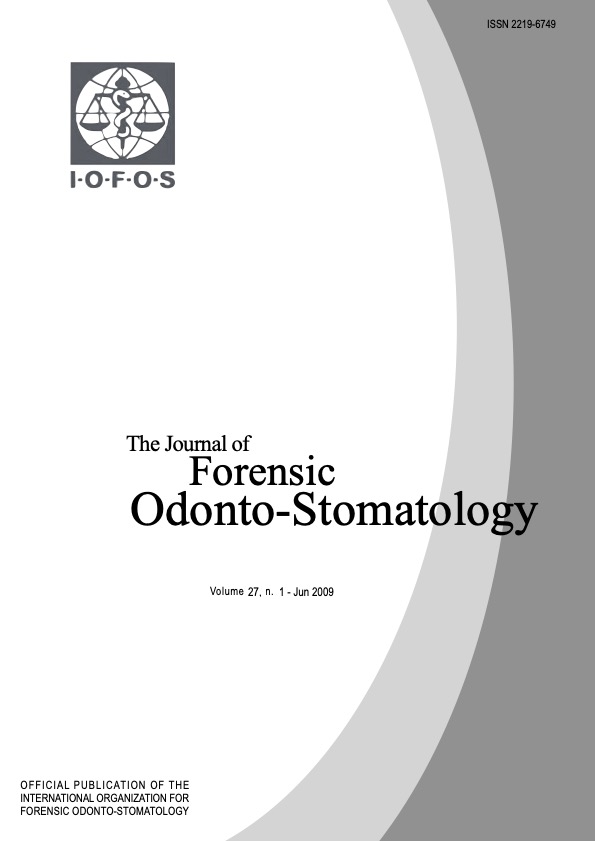The discrimination potential of amalgam restorations for identification: part 1
Abstract
The dental identification of human remains utilizes the matching of dental restorations. The radiographic images of amalgam restorations are paramount in this process. The compound amalgam restoration has a unique radiographic morphology and can be readily identified in both antemortem and postmortem data. To test the radiographic morphology of compound amalgam restorations, 10 out of 40 Typodont teeth, restored by students, were tested for their discriminatory potential by 12 examiners. The results showed that the radiographic morphology of compound amalgam restorations can be accurately matched by dentally trained personnel. This suggests that in cases where accurate radiographic material is used for dental comparison, less than 12 concordant features are necessary for positive dental identification. If the antemortem and postmortem radiographic images of a compound amalgam restoration are exactly the same then this feature is unique and identification can be achieved by a single concordant feature.

